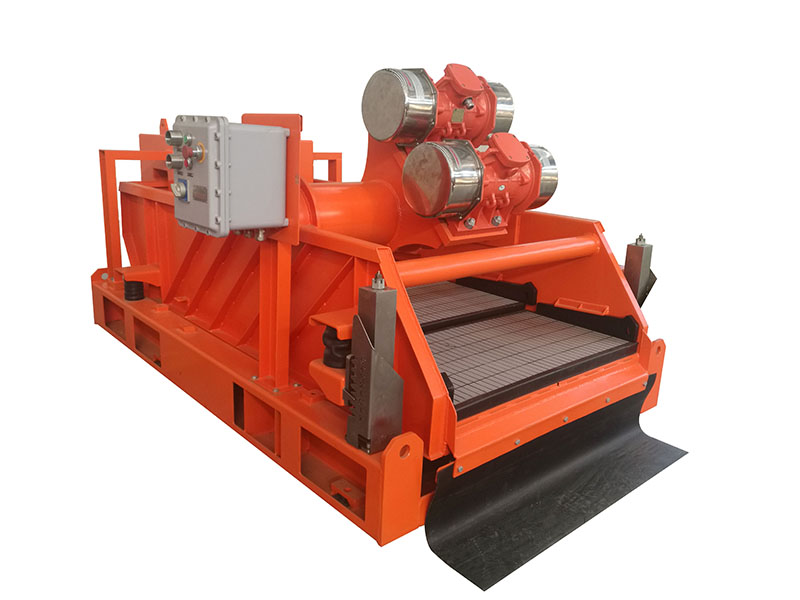∠ Tel:+86-29-86330856
∠ Mobile:+86-18609284085
2018-3-9
Most recyclers today use orbital, elliptical or linear motion shakers, and each has a place in different drilling scenarios. With that being said, linear motion shakers generate high G-Forces and are especially effective in shallow formation sections where high-volume, heavy solids are encountered, and have the ability to remove the solids quickly.
When choosing a linear shaker for your mud system, look for a long runway (area of length from the front of the shaker to the end where the cuttings dump off). The longer length shaker bed allows extra time for solids to separate from the liquid, and result in drier solids leaving the mud system for disposal. You can also increase the angle of the shaker bed by five degrees to further increase the travel time of the solids.

Proper shaker screen selection enhances the results of the mud recycler, and, combined with the G-Force of the shaker, works in tandem to maximize solids dryness. In the past, shaker screens were sized by mesh size.
Before buying your recycler, do your research, talk to other drillers, decide what you need and you will be able to make the best decision for you and your company.
Example: 40 mesh screen had 40 openings per square inch of screen area. As a measurement, this left room for a lot of unknown variables, including questioning what gauge wire was used in the manufacture of the screens. The wire gauge altered the size of openings on the screen surface and resulted in changing the size of the solids that the screen could pass or “cut.”
The industry needed a consistent way to measure the “cut point” of the screens, and the API introduced the D100 designation, or D100 “cut point” using the average micron cut of the shaker screen, depending on the wire. Two examples are the CRX Oblong and UF square meshes.
Identification of particle sizes from core samples taken on each drilling location provides drillers valuable information and aids in selecting screens. Drilling contractors should carry a couple of testing tools to measure the effectiveness of a of the mud recycler while drilling. These tools are: a Marsh funnel and cup, sand content kit and mud weight scales. Taking mud samples from the return pit or possum belly before the mud is processed, the underflow and overflow of the cones and the clean mud tank help monitor the effectiveness of each component of the recycler, and the driller can make component adjustments to achieve maximum efficiency.
-To be continued-